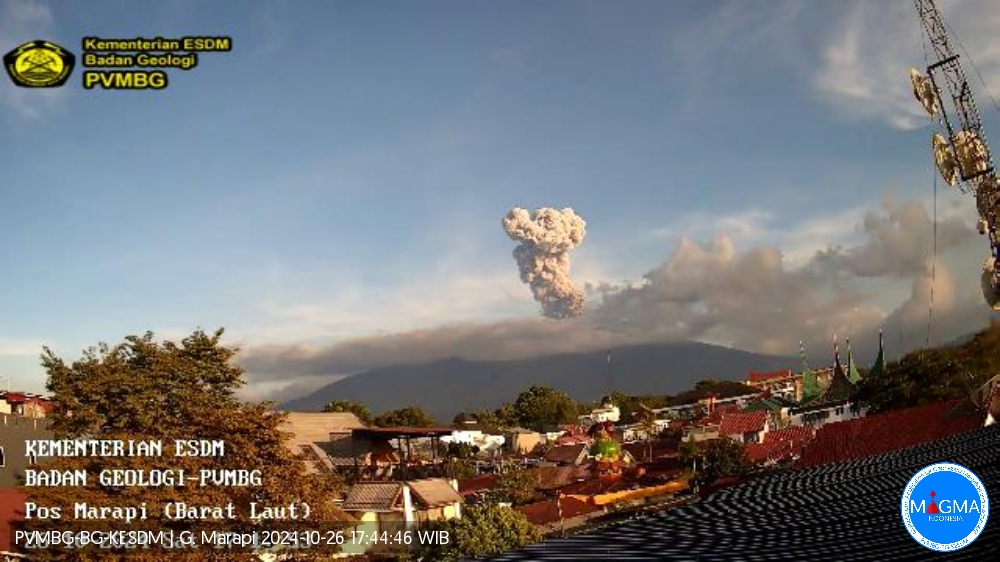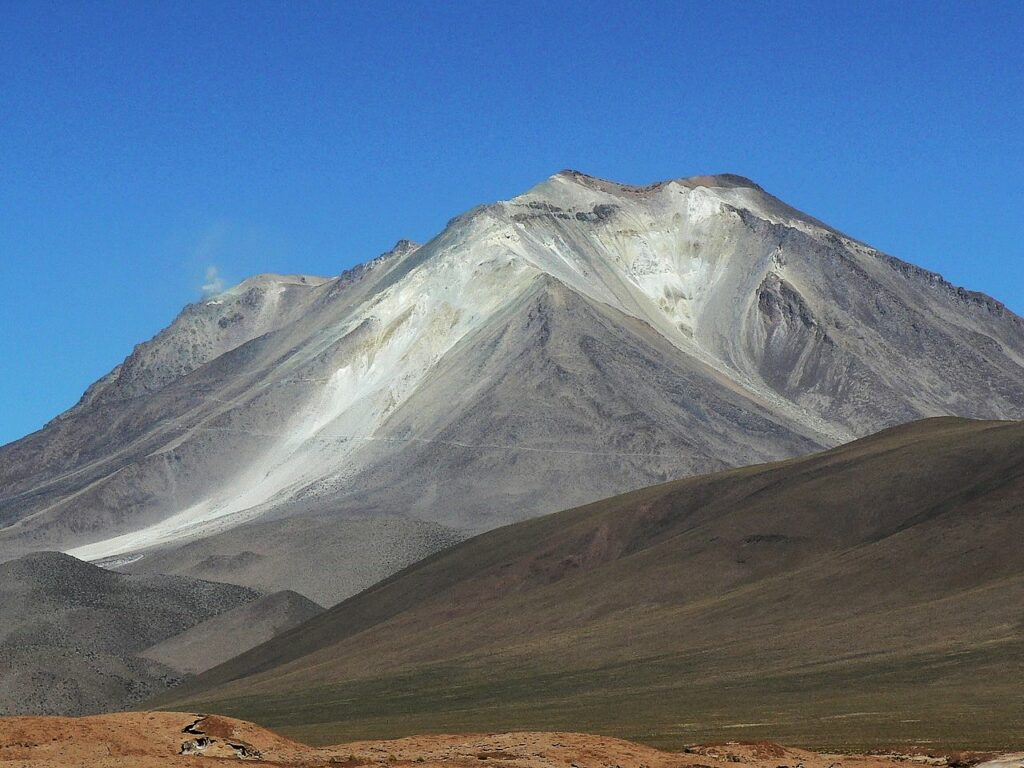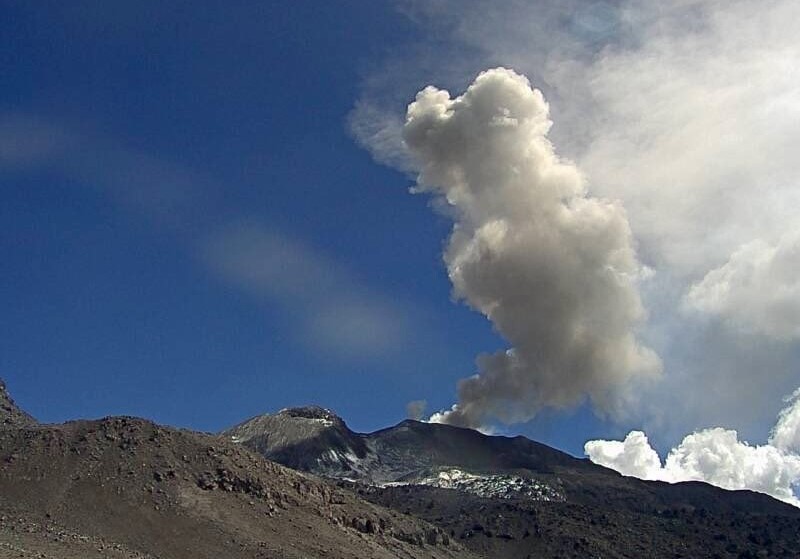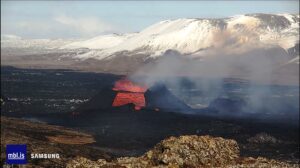November 01 , 2024.
Indonesia , Marapi :
The Pusat Vulkanologi dan Mitigasi Bencana Geologi (PVMBG) reported that eruptive activity at Marapi (on Sumatra) was ongoing during 23-29 October. At 01h39 on 23 October a dense gray ash plume rose 800 m above the summit and drifted NW. On 26 October a dense gray ash plume rose 800 m above the summit and drifted NE at 13h05, and at 17h10 that same day a loud booming sound was accompanied by a dense gray ash plume that rose 1 km and drifted NW. Dense gray ash plumes from eruptive events at 07h00, 07h36, 09h56, and 16h01 on 27 October rose 800-2,000 m above the summit and drifted NW and NE.
According to a 28 October news article an Early Warning System (EWS) to detect lahars on the flanks became operational after final testing by BNPB. The EWS was comprised of sensor devices to detect river water levels in drainages, surveillance cameras (CCTV), and siren towers to notify the public to evacuate, spread across 23 installation locations. The locations were selected based on the results of a field mapping survey and evaluation of lahars that occurred in mid-May. The Alert Level remained at 2 (on a scale of 1-4), and the public was warned to stay 3 km away from the active crater.
Sources: Pusat Vulkanologi dan Mitigasi Bencana Geologi (PVMBG, also known as CVGHM), Antara News, Antara News , GVP.
Photo : Magma Indonésia ( 26/10/2024)
Indonesia , Lewotobi Laki-laki :
An eruption of Lewotobi Laki-laki occurred on Friday, November 1, 2024 at 04:20 WITA with the height of the ash column observed at ±1000 m above the summit (±2584 m above sea level). The ash column was observed to be gray with a thick intensity, oriented towards the West. This eruption was recorded on a seismograph with a maximum amplitude of 14.8 mm and a duration of 207 seconds.
VOLCANO OBSERVATORY NOTICE FOR AVIATION – VONA
Issued : October 31 , 2024
Volcano : Lewotobi Laki-laki (264180)
Current Aviation Colour Code : ORANGE
Previous Aviation Colour Code : orange
Source : Lewotobi Laki-laki Volcano Observatory
Notice Number : 2024LWK706
Volcano Location : S 08 deg 32 min 20 sec E 122 deg 46 min 06 sec
Area : East Nusa Tenggara, Indonesia
Summit Elevation : 5069 FT (1584 M)
Volcanic Activity Summary :
Eruption with volcanic ash cloud at 20h20 UTC (04h20 local).
Volcanic Cloud Height :
Best estimate of ash-cloud top is around 8269 FT (2584 M) above sea level or 3200 FT (1000 M) above summit. May be higher than what can be observed clearly. Source of height data: ground observer.
Other Volcanic Cloud Information :
Ash cloud moving to west. Volcanic ash is observed to be gray. The intensity of volcanic ash is observed to be thick.
Remarks :
Eruption recorded on seismogram with maximum amplitude 14.8 mm and maximum duration 207 second.
Source et photo : Magma Indonésie.
Chile , Ollagüe :
Special Report on Volcanic Activity (REAV), Antofagasta Region, Ollagüe Volcano, October 31, 2024, 08:40 local time (Continental Chile)
The National Geology and Mining Service of Chile (Sernageomin) announces the following PRELIMINARY information, obtained through the monitoring equipment of the National Volcanic Monitoring Network (RNVV), processed and analyzed at the Volcanological Observatory of the Southern Andes (Ovdas):
On Thursday, October 31, 2024 at 08:15 local time (16:59 UTC), the monitoring stations installed near the Ollagüe Volcano recorded an earthquake associated with the fracturing of rocks within the volcanic system (VT volcano-tectonic type).
The characteristics of the earthquake after its analysis are as follows:
TIME OF ORIGIN: 08:15 local time (11:15 UTC)
LATITUDE: 21,310° S
LONGITUDE: 68.156° West
DEPTH: 1.3 km
LOCAL MAGNITUDE: 3.1 (ML)
Observations:
After the event mentioned in this report, 3 earthquakes of similar characteristics of lower energy were recorded.
The volcanic technical alert remains at the Green level.
Source : Sernageomin.
Photo : Sarah and Iain de – — Flickr, CC BY 2.0, ( 01/2007)
Colombia , Nevado del Ruiz :
Manizales, October 29, 2024, 6:30 p.m.
From the monitoring of the activity of the Nevado del Ruiz volcano, the Colombian Geological Survey (SGC), an entity attached to the Ministry of Mines and Energy, reports that:
During the week of October 22 to 28, 2024, the volcano continued with unstable behavior. Compared to the previous week, the main variations in the monitored parameters were:
– Seismicity related to the activity of fluids inside volcanic conduits decreased in the number of earthquakes recorded and in the seismic energy released. In general, signals associated with pulsatile ash emissions predominated. The energy levels of these events ranged from low to moderate. On October 23, the recording of long-period signals with a very low energy level was remarkable. Some of these earthquakes were associated with ash emissions and temperature changes in the emitted materials. Both phenomena were confirmed by the cameras (conventional or thermographic) used to monitor the volcano and by reports received from officials of the Los Nevados National Natural Park (PNNN) in the area of volcanic influence.
– Seismic activity associated with the fracturing of rocks inside the volcanic edifice maintained similar levels in the number of earthquakes recorded and in the seismic energy released. The earthquakes were located in the Arenas crater and on the south-southwest, southeast, northeast and north-northwest flanks, at distances of up to 12 km from the crater. The depths of the events varied between less than 1 km and 8 km from the summit of the volcano. The highest magnitude of the week was 1.4, corresponding to the earthquake recorded on October 26 at 06:35, located in the Arenas crater, at a depth of less than 2 km. Regarding the seismicity related to the activity of the lava dome (protuberance or mound) located at the bottom of the crater, it decreased in the number of earthquakes and presented low energy levels.
– The emission of water vapor and gases into the atmosphere continued from the Arenas crater. The rates of degassing of sulfur dioxide (SO2) were variable and showed a slight increase compared to the previous week. For this week the wind direction favored the location of the measuring stations.
– The maximum height of the gas column was 1200 m vertically and 2100 m in dispersion; these values were measured above the volcanic summit during the ash emissions of October 22 at 19:09 and October 26 at 17:46, respectively. The direction of dispersion of the columns was variable with a predominant tendency towards the northwest and southwest of the volcano.
– During the monitoring of thermal anomalies at the bottom of the Arenas crater, from satellite monitoring platforms and despite the atmospheric conditions of high cloudiness in the area, some reports of low energy level anomalies were obtained.
Source et photo : SGC
Peru , Sabancaya :
Analysis period: from October 21, 2024 to October 27, 2024, Arequipa, October 28, 2024
Alert level: ORANGE
The Geophysical Institute of Peru (IGP) reports that the eruptive activity of the Sabancaya volcano continues. During this period, an average of 4 explosions per day have been recorded, with columns of ash and gas up to 1500 m above sea level above the summit of the volcano. Therefore, the volcanic alert level remains at ORANGE
The IGP has recorded and analyzed the occurrence of 205 earthquakes of volcanic origin, associated with the circulation of magmatic fluids inside the Sabancaya volcano, as well as earthquakes related to rock fracturing. An average of 4 explosions per day have been recorded.
Columns of ash and gas have been observed up to 1500 m above sea level above the summit of the volcano. The predominant direction of these emissions has been towards the South-West, South and South-East sectors of the volcano over a distance of less than 10 KM.
A slight inflation process continues to be recorded in the North sector (around the Hualca Hualca volcano).
Satellite recordings have identified the presence of 27 thermal anomalies, with a maximum value of 4 MW, associated with the presence of a lava body on the surface of the volcano’s crater.
Moderate emissions (770 tons/day) of sulfur dioxide (SO2) have been observed
RECOMMENDATIONS
• Maintain the orange volcanic alert level.
• Do not approach within a radius of less than 12 km of the crater.
Source : Cenvul
Photo : Ingemmet ( 2021)








